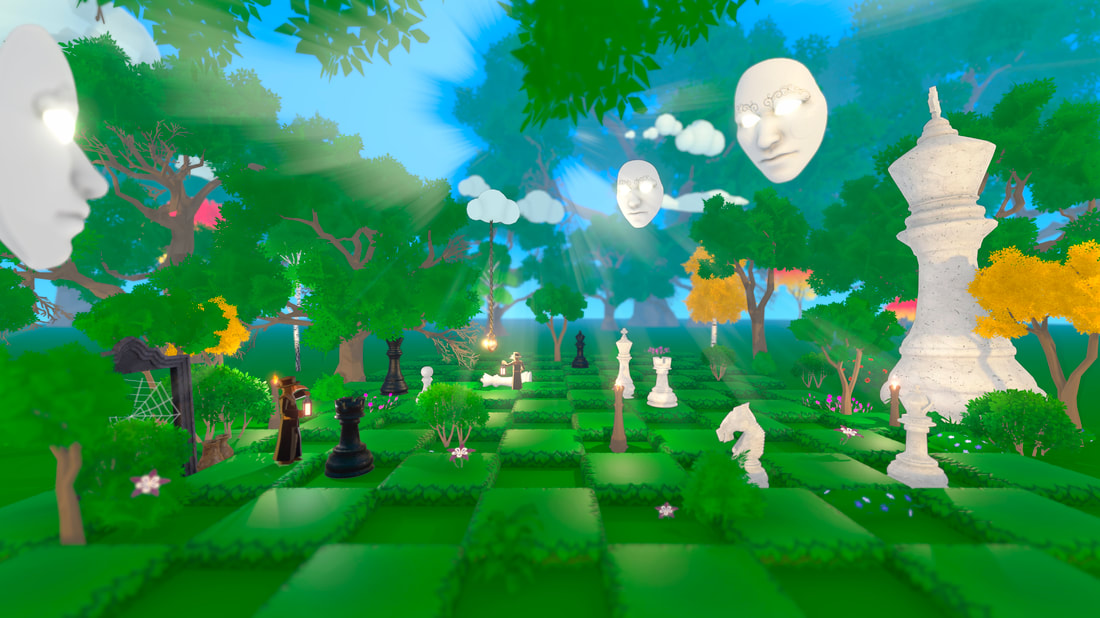|
Welcome to the first entry in Lamplight Forest Journal! I’ll be freely exploring the world of video games in relation to my own journey as a game developer and game fan.
I’ve decided to frame this whole journal as an interview with myself: I ask questions, then I answer them. A little odd I know, but I had been reading some interviews with game designers in the book Dungeon Hacks: Expanded Edition, so I got into this mode of thinking and found that really it resonated with me because that’s how I frame a lot of problem solving anyway. But most importantly, after experimenting with this style in order to hammer out some design problems I was having (eg “So tell me about what you’re trying to achieve here. Why isn’t x working for you?” which was extremely effective in getting to the root of the problem), I found it just keeps me on track if I have a question to answer. Otherwise I tend to go on tangents. Before we get started, how about you introduce yourself Sure! My name is Alexander Thumm I’m the founder and CEO of the game studio Lamplight Forest, based in Adelaide, Australia. I come from a musical background (well art/music/writing really), with a degree in music technology and a PhD in expressive techniques for innovative musical gameplay. These days my skills and interests in gaming are very far ranging including game design, puzzle design, programming, art direction, and story/narrative design. I’ve designed and programmed a huge variety of (currently unpublished, more on that later) games including musical and narrative puzzle adventures, sokobans, environmental puzzle games, falling-block/match3s, 2d and 3D platformers, interactive fiction, games-within-games and much more, though my games almost always hybridise genres, so they’re never just one of those things! So what’s this journal about? What are you aiming to achieve? Well it’s just a journey, so I’m not aiming to achieve anything specific, but in a broader sense I looked back at 2020 and found that some of the strongest aspects of that year were about connecting with community: through online game conferences, game-business mentors, friends helping me to playtest, etc. So, inspired by a lot of game-related non-fiction I’ve been reading over the Christmas break (in particular the Boss Fight Books: Spelunky, Chrono Trigger, Majora’s Mask and Earthbound) I’ve developed a new appreciation of gaming non-fiction and felt that was the ideal way for me to be more involved with the community. It started with playing Spelunky 2. I knew Spelunky by reputation but had never played the first one, so on intuition (I generally choose what to play based on intuition, I almost never read reviews) I started playing. I delved into the background of it a little more and knew it was more full of secrets then I’d ever experience first hand, so that led me to Derek Yu’s Spelunky book, which led me down the roguelike rabbit hole (both playing and reading about, though after a month or so Brogue has been the only one I’ve stuck with, I guess because it’s so polished and easy to play). But like Derek, the sheer breadth of what is possible in Nethack is just astounding to me, but probably more interesting to me as a designer than a player, and so without becoming a Nethack expert, the best way to discover all this is to read about it (I have the a similar feeling reading about Earthbound and Chrono Trigger, so much about them sound so amazing, but there's no way I'm ever grinding through the hours upon hours of combat) I love too how literally roguelikes borrow from each other, even in a commercial one like Spelunky where Derek lifts stuff straight out of “traditional” roguelikes in a way that seems to both honour and transcend its source. So anyway the other branch of this inspiration was that the passage in Derek’s book where he describes his proc gen process for Spelunky opened up a world of potential for me, when I saw how simple it was. I had been experimenting with things like randomization, wave function collapse, cellular automata and L-systems, but to read this simple passage that basically said “a 4x4 grid randomly populated with handmade rooms” (of course there’s more to it than that, but that’s the foundation) really opened my mind to how simple it could be. And really all the other complexity in Spelunky works, and is so gameplay-legible, because this foundation is kept so simple. Anyway that was a bit of a tangent so short answer is, I’m connecting with the gaming community by sharing both what I love and what I grapple with as a player and game developer. Great! I think that’s enough as an introduction, so we’ll follow up in the next post with where you’re currently at, which is, in a nutshell…? Roguelikes, Rad (by Double Fine) and Readability Thanks for reading. Feel free to say hi in the comments and sign up to Lamplight Forest for updates on our games
0 Comments
Leave a Reply. |

 RSS Feed
RSS Feed